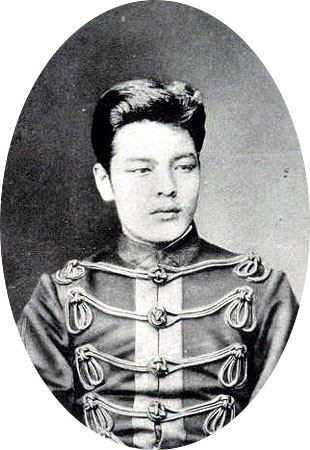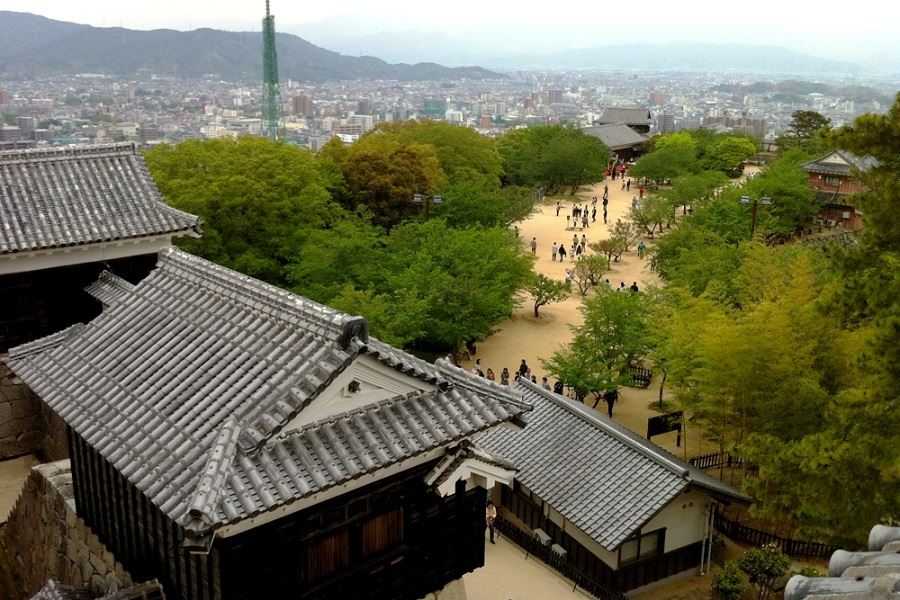Akiyama Yoshifuru
Home » Akiyama Yoshifuru
Akiyama Yoshifuru
Name In Japanese: 秋山 好古
Pronunciation: akiyama yoshifuru
Period: 1859 to 1930
Akiyama Yoshifuru was the third son of a poor samurai in the Matsuyama Domain, Iyo Province, today’s Ehime Prefecture. His birthplace in central Matsuyama is now a museum, featuring an impressive horseback statue of Yoshifuru, and a bust of his younger brother, Saneyuki, who became a celebrated Vice Admiral. The Akiyama family was so short of money that the young Yoshifuru was obliged to perform menial work at a public bathhouse.
In 1877, Yoshifuru entered the precursor of the Imperial Japanese Army Academy. After attending the Army Staff College, he went to France as military attaché to learn about cavalry tactics and techniques. At a time when the Japanese Army had decided to model itself on the Imperial German Army, Yoshifuru was the only Japanese officer sent to study in France.

With his pale skin and large eyes, Yoshifuru was often mistaken for a European student by many of the foreign instructors at the Japanese Army Academy. During his stay in France, he was popular with the ladies. He was a modest, self-deprecating man who had no interest in fine eating, although he was a heavy drinker who allegedly drank even in battle.
He first saw action in the First Sino-Japanese War of 1894-1895 as commander of a cavalry regiment and the later Boxer Rebellion. In the Russo-Japanese War of 1904-1905, he led his troops in the Battles of Shaho, Sandepu, and Mukden against Cossack cavalry of the Imperial Russian Army. He recognised the strategic potential of highly mobile cavalry in disrupting enemy operations over a wide area, anticipating the role played by tanks in later decades. Instead of cavalry charges, he favoured ambushes and hit-and-run attacks using machine guns. His unorthodox approach made a major contribution to the Japanese victory, and in 1906, he was decorated for his services in Russia.
In 1913, Yoshifuru was made commander of an army division, and on promotion to full general in 1916, he commanded the Imperial Guards Division. The following year, he was put in command of the Chōsen Army in Korea. In 1920, he became Director General for Military Education. Declining promotion to Field Marshal, he retired from active military service in 1923.
Yoshifuru returned to Shikoku and became the headmaster of the Junior High School that became today’s Matsuyama High School. He died of diabetes at the Army Medical School Hospital in Tokyo in 1930. His modest grave is in the Sagidani Cemetery on a hillside in Dogo. His life in Matsuyama and Russia is depicted in the highly entertaining novel Clouds Above the Hill by Ryotaro Shiba. There’s another statue of Yoshifuru at the park in Baishinji, Matsuyama.
Related Tours

Experience the most beautiful and interesting temples of the Shikoku Pilgrimage in seven days.

A tour for families or friends, staying in the most characterful kominka and ryokan of Shikoku.

Visit the most beautiful and interesting temples of the Shikoku Pilgrimage and walk the toughest trails.

